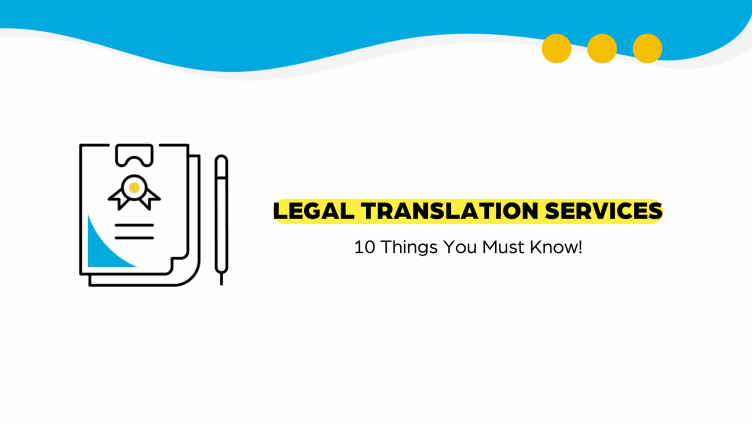Machine Translation and Human Translation. Who is the winner?

To start with, Translation is an important tool to communicate from one language to another. The translation is helping not only individual to understand different cultures and tradition but also helping businesses and brands to expand in the foreign market. In this globalized and modern world, it is very important to be present and communicate across the border. In this expansion and communication, technology is playing a very important role. For Human Translation and Machine Translation, we have started using technologies with the help of Artificial Intelligence and Machine learning. The AI and ML are creating tools which are helping us to get the translation fast and cost-effective.
With all these new development in Translation field, the discussion on the difference between Human Translation and Machine Translation is quite relevant. The most prominent question amongst all is, which of them is best, Machine Translation and Human Translation. Human translation being old and generic since ages have still held its position.
On the other hand, Machine Translations has attained some prominent heights. In close 6500 languages spoken worldwide, the machine holds various setbacks. Human Translator on the other hand, have detailed knowledge of dialects, alphabets, grammatical rules and various other nuances.
What is Human Translation
When a human translator performs the translation task rather than a machine, it is called human translation. It is the most reliable and accurate form of translation Human Translation is the oldest form of translation and the most correct form of translation. Human translation is highly specific in terms of target language and domain. Since ancient times many books, papers, documents were translated into different languages by a human.
Although machine Translation is at rising currently, one must say that Human translation is the best way to translate any form of content and document such as User manuals, product information, websites, personal documents, magazines, letters and advertisements.
For business and professional purposes one must go for human translation, as machine translation is not however adequately advanced to translate archives with the understanding and sublately that human translators give. Human Translation incorporates the capacity to translate and interpret the meaning of a sentence, instead of a word to word translation done which is done by the machine Translation. With the help of Human Translation it is very easy to understand teh right content of a text or content.
Importance and benefits of Human translation
Accuracy
Human translation is done to get the most accuracy. In present day also machine translation can give a 70-75% of accuracy. It the human touch only that makes the translation complete and 100% accurate.
Context
Machine translation always translate word by word. In order to make translation more appropriate and contextual, human translation is necessary.
Localization
Machine translation always fails in delivering localized translation contents for the target audience. To achieve the quality and make content understable for the target audience, native human translation is required.
Tonality
Machine translation always fails to understand and translate the tonality of the content for the target language. Which can be done only by a human translator.
Machine translation can translate the content but a human translator can translate emotions too.
What is Machine Translation
The translation carried out by the computer using Machine Learning and Artificial Intelligence is known as Machine Translation. It is often the simplest translation, where the user needs to select his source and target language. On various instances when software uses self-learning AI components, it is called as Neural Machine Translations.
Machine Translations are based on the word-to-word translation phenomenon. All prominent and professional translations are performed through human translation.
What are the types of Machine Translation?
- Generic Machine Translation
- Customizable Machine Translation
- Adaptive Machine Translation
- Rule-based Machine Translation
- Statistical systems Machine Translation
- Neural Machine Translation
Machine Translations vs. Human Translations
Translation beings centuries old has come under various transformations. Prominent transformations were with the introduction of machine translation in the 1990’s. This was the time when the machine and human’s had started being Co-existent to each. This evolution was restrained to a level, where machines were bound to make mistakes.
Translation done by machines had to be always rectified by humans, ensuring no lapses are left. Translation of business documents has been prominent over the years and no one wishes to lose any time. In the race of Machine Translation and Human Translation, Humans have always surpassed their counterparts. Humans can effectively incorporate the right amount of emotion with complete clarity of message.
Why Machine Translation Fails?
Machines translate Words, Not Ideas
Machines are backed by the algorithm, which follows a certain line of commands to translate your texts. These machines are based on the glossaries and grammar rules outlined by a non-linguists background.
Since translation is quite a complex process and isn’t just conversion of words. Machines often lack a human touch and the right context of a sentence that needs to be translated. Humans, on the other hand, can easily comprehend the right idea and emotion behind every word.
Machines lack identification and rectification of Mistakes
An error uncorrected won’t pass under human linguists, but what happens when a machine comes across the same? A machine often overlooks errors or just transfer to target texts. Contrary to human translation a machine translation cannot identify or rectify errors (Wrong terms, erroneous sentences, semantic errors).
Human linguists won’t overlook such errors and rectify them in the necessary tone. Although some machine translation can rectify certain typos. Whereas it isn’t a wise decision to leave your transcript under certainty.
Machine TRANSLATION Lacks Emotions
Emotion driving materials i.e. Marketing and Advertising materials comprise of special words that make them worthy. Marketing transcripts, on the other hand, require a very specific approach often “Trans-creation”. Human translator often recreates the sentence in the target language to ensure emotion and contextual meaning.
Linguists working on high-end marketing material have deep knowledge of the source and target language. Statistical modification in Machine Translation solution also doesn’t resolve the issue and only highlight miserable parts.
Devoid of Translation Transformations
Linguists use various specific transformations theories to come to a final transcript. They cover various aspects such as syntax and grammar, the sentence ending with semantics and lexis. This deep aspect is also crucial as it helps in correlating text with the back-end meaning of texts.
Machine Translations fail to use appropriate transformations with prevailing artificial intelligence. Experienced linguists perform in-depth analysis through intellectual efforts. When dealing with international clients, correct transformations can help deliver accurate information’s.
Incapability to differentiate between Homonyms
As we all are aware of Homonyms, their usage and context they are used. Machine translation often mistakes them out of context leading to the varied meaning of the text. Linguists, in general, go through the actual meaning of homonyms.
Machine Translations can pick up certain homonyms, but there is always a certain scope of error. Algorithms aren’t created considering cross-language words and can often lead to severe misunderstandings.
A machine cannot translate Local Cavities
There are various words in languages that don’t have direct analogues in target languages. More precisely there is various local and cultural identity bearing glossaries that are particularly secluded to certain languages. Machine Translation often lack this feature leading to incomplete and meaningless transcripts.
Expert linguists often adopt trans-literation to explain the context of the word, ensuring the original meaning isn’t distorted to the target audience. Machine Translation and Human Translation differ in terms of efficient and seamless translation it offers.
Machine Cannot Devise New Terms
With consistently growing technology, new inventions are made every month. These latest technologies come up with their generic terms. Their arises need to translate them into worldwide languages. Translating can be a tedious task when your target language lacks subsequent glossary.
Machines often fail to create new terms for latest terminologies. However human translations go through multiple references and research to coin words as per terminologies. Relying upon human translation compared to a machine, can help you with more clarity.
Lack of interconnections
The high-end legal document often comprises of interconnecting words. These words and their positioning with subsequent words is very crucial for the overall meaning of the text. To under the words, one needs to have complete knowledge of context, it has been placed in.
Machines often lack the calibre to comprehend with the texts and their meanings. Professional linguists undergo detailed analysis of each word. There has to be an intrinsic interconnection between each word placed in the text.
Lack of Literary Beauty
The very expressive quality of transcripts and deliver the right message is a beauty in itself. Linguists can imbibe emotion driving metaphors, which machine translation greatly lack. Experienced linguists can translate accurately to target language with the same drift of emotions.
Although machine translation can possess certain potential in translation, they truly lack the emotional aspect of a transcript. Human translations, on the other hand, do possess leverage to produce actual translations since ages.
Translators like a machine are only replaceable
The rise of the multilingual population backed by developing machine translation technologies has diminished the glory of translation. Time has come where it is considered, anyone with knowledge of language performs the translation. Whereas in reality, translation is quite an expertise and professional field.
Advance algorithms created machine translation cannot simply replace the beauty of human translations. Translation requires expertise in certain fields, a certain set of skills and immense experience.
Although Machine Translations have been solidifying day by day and progressing to achieve a platform with human Translations. The most prominent issue in machine translation is that it follows word-to-word phrasing of translations. Transcripts prepared by machines often lack in clarity of thought or words with multiple meaning and context.
Along with Translations runs way deeper than what machine analysis and transcripts. There are multiple tons, linguistic nuances and multiple idioms which a machine is unable to pick. Here we have presented a detailed analysis of prominent aspects in which a machine can fail.
Final Thoughts
Machine translations have come a long way in terms of producing accurate transcripts. There certainly exists numerous loopholes where machine translation might be disastrous. The translation is very crucial in the business sector when dealing with international clients. At Linguidoor, we offer round the clock assistance to drive your success. Professional native translators will get your work done, in the limited duration of time.
One must always abstain from machine translations since and jeopardise your brand value with some error. Rely upon the experienced and domain specific human translation from Linguidoor to give you state-of-the-art Translation of your document or website. Ensure you don’t lose the trust of your trusted clients with a translational error through unreliable machine translators. In the Quest of Machine Translation and Human Translation, it always advisable to rely upon hassle-free and guaranteed results.
If you want to know more about the machine and human translation, you can drop a line at services@linguidoor.com or visit us at www.linguidoor.com
Legal Pages
Services

Made up your mind yet?
Empower your globalization goals today!




